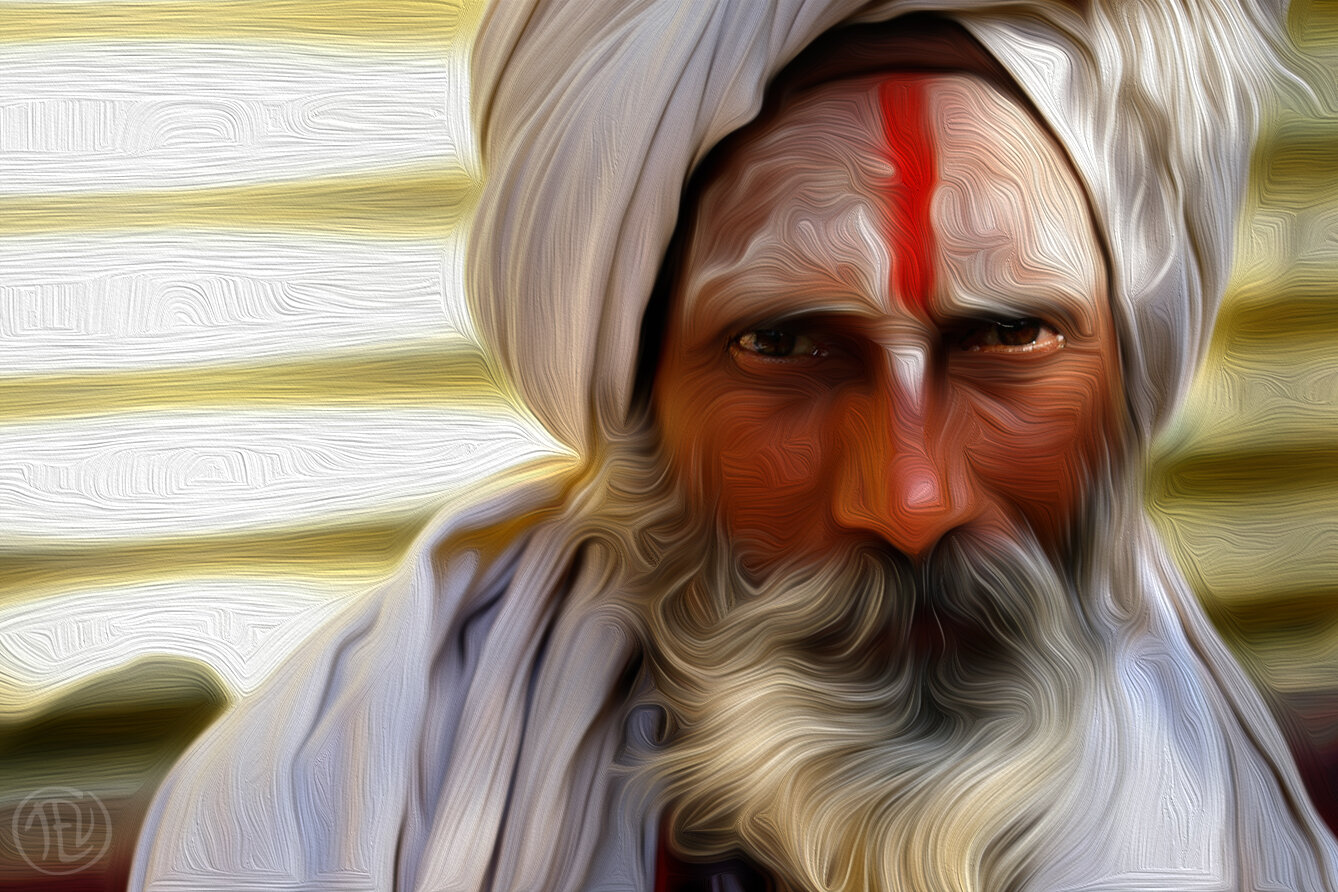vairāgya
detachment
What does it mean to be detached in the midst of life? Or in the midst of a spiritual practice? How do we prevent getting attached to the path of detachment? These are all raw and real questions that one will face along the way. It is easy to grasp a new attachment in the name of spirituality / sadhana / practice (or create a new identity even). However, at the end of the day we have to go beyond even the tools of detachment. We have to give it all up. And to renounce something doesn’t mean we have to remove it physically or change anything on the outside - but rather drop it internally. It is our mental attachments that are between us and full freedom. The renunciation happens at the level of attitude.
As we go through our day-to-day life we can practice staying detached - to people, emotions, situations - to anything coming our way. It starts with our attention to their effects on our inner peace. At the heart of this inner work lies complete honesty with oneself.
The BIG questions will arise: How can we be completely involved with life, yet detached? How can we love - FULLY - yet not be tangled? It is no small quest to hold these questions at heart. And their fragrance often brings up a lot of emotion. These emotions give us pointers as to where we hold on tight - and where we are held back by beliefs.
Detachment implies that we are attached to a person / situation / pattern / thing / belief etc. Attachments can take many attributes, physical or non-physical. We can be attached to thought patterns and behavioral patterns as deeply as we may be attached to our lover. At the core of it, we are resisting change or deviation from what we know.
Remember, the difference between admiring and desiring is attachment.
- Jyoti
LETTING GO
How to let go of something we are attached to? Does it mean that we loose our sense of connection with that person / situation / thing? Most often we invite a more intimate connection to what we are attached to, when we start letting go of our hold. If we are truly loving unconditionally - including within our relationships with loved ones - there is a deepened sense of gratitude for them being in our lives when we remember, at a heart level, the lessons of impermanence. Everything is bound to change - since change is the only constant (at least on the physical plane). This of course points to the fact that when we loose something we’re attached to, there will be suffering. But if we see that nothing is ‘ours’ to begin with, all we can do is enjoy it while in our presence. This is not an easy pill to swallow. We all have loved ones that we want to have around us forever. But life changes. Not that people will leave us, but our physical life has a natural progression within time and space, and there will be moments when people that we love transition. People die. Life changes. How do we prevent fearing this change? Remember that change is a natural law, why do we resist it? How do we embrace it, in order to live more fully?
At the heart of the fear, lies fear of death and an unwillingness to let go. We want to be in control, and our attachments are often a side effect of pouring our hearts out. How do we keep pouring our hearts out yet prevent getting hurt when life changes? We keep pouring. It is the pouring that nurtures the connection. We appreciate every moment. We inquire into the roots of our suffering and our fears. This is why the inner journey is not attractive to many. It is easier to push these topics to the side, or distract ourselves. Often we push relationships or commitment away as to not get tangled in these type of heart pinching topics. Simply put, we do this subconsciously in order to live life as we know it. But one day, loss and suffering will knock on our door. Why not rather be welcoming the change instead of avoiding life? Our attachments identify us, in many ways. Letting go of these aspects of our identity is the undercurrent of all of the work related to detachment.
UNATTACHED
Being unattached implies that we haven’t got attached yet. Once we see our attachments, how we move forward becomes a conscious choice. Both ‘detachment’ and ‘unattached’ are relevant words, as they bring our attention to different parts of the trajectory of involvement with life. Nevertheless, it is important to remember that unless we were attached in the first place, we would not be gifted the blessing of seeing what detachment really means - at an experiential level. We have to consciously see, and oftentimes experience, our conditioning in order to move beyond it. Same with attachments. Therefore, these lessons are gifts. Opportunities to learn. This, of course, also means that judgement has no place here.
Once we see our attachments (as well as desires, likes and dislikes) we hold them in the light of our inquiry. It can be helpful to pay gratitude to our attachments as they serve as our teachers, pointing us to that which is beyond. Humility - and humor - is an important part of the process of seeing ourselves and our patterns fully. Especially when emotions bubble up in the midst of the process. We have to remember to ease the seriousness, and smile at what we find in our observations. Otherwise, the journey within becomes real arduous and we create more suffering for ourselves. So, to you who read this - be easy on yourself in the process of unveiling the conditioning. And remember, you’re not the only one with attachments, desires, likes and dislikes. It is the human condition, which by the way, is no less divine. Remember that. All the attachments that we find provide beautiful opportunities to dive deeper within ourselves.
DOERSHIP
A topic of importance related to the discussion of attachment, is our clinging to the identity we have created and sustained for ourselves. We most often believe ourselves to be the doer of actions, the voice behind the words, and the thinker of thoughts. But these are merely beliefs that we’ve reinvested in to the point of self-hypnosis. We’re bound by our own spell. But we can also see through it, if we choose to.
We cling to the vasanas (conditioning), our sense of self, our personality, the roles that we play, etc. There is clinging on every level, so working with detachment happens on every level (physical, mental, emotional, spiritual/energetic).
Our job is to step out of the groove, and to see things clearly. We can then choose to see ourselves as the doer - or - as life happening through us. The practice is to witness what is happening, as is. At the heart of detachment lies the willingness to give up our idea of control and surrender into the uncertain. The essence is a willingness to let go, to make space, which is in a sense a welcoming of the mystery and dance of life.
CHALLENGE
Continue to ponder - How can one be completely involved, yet detached? Stay as the witness.

